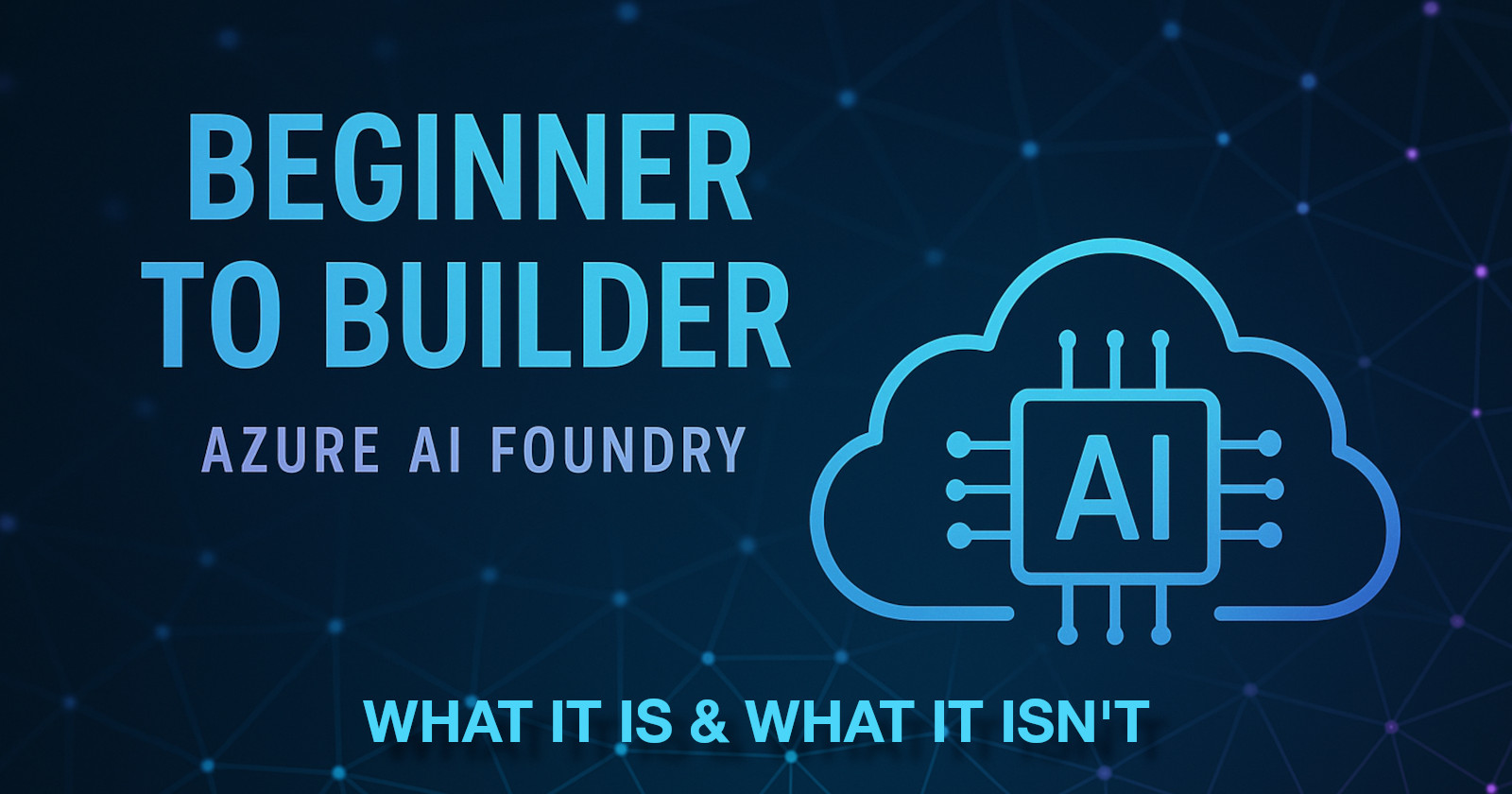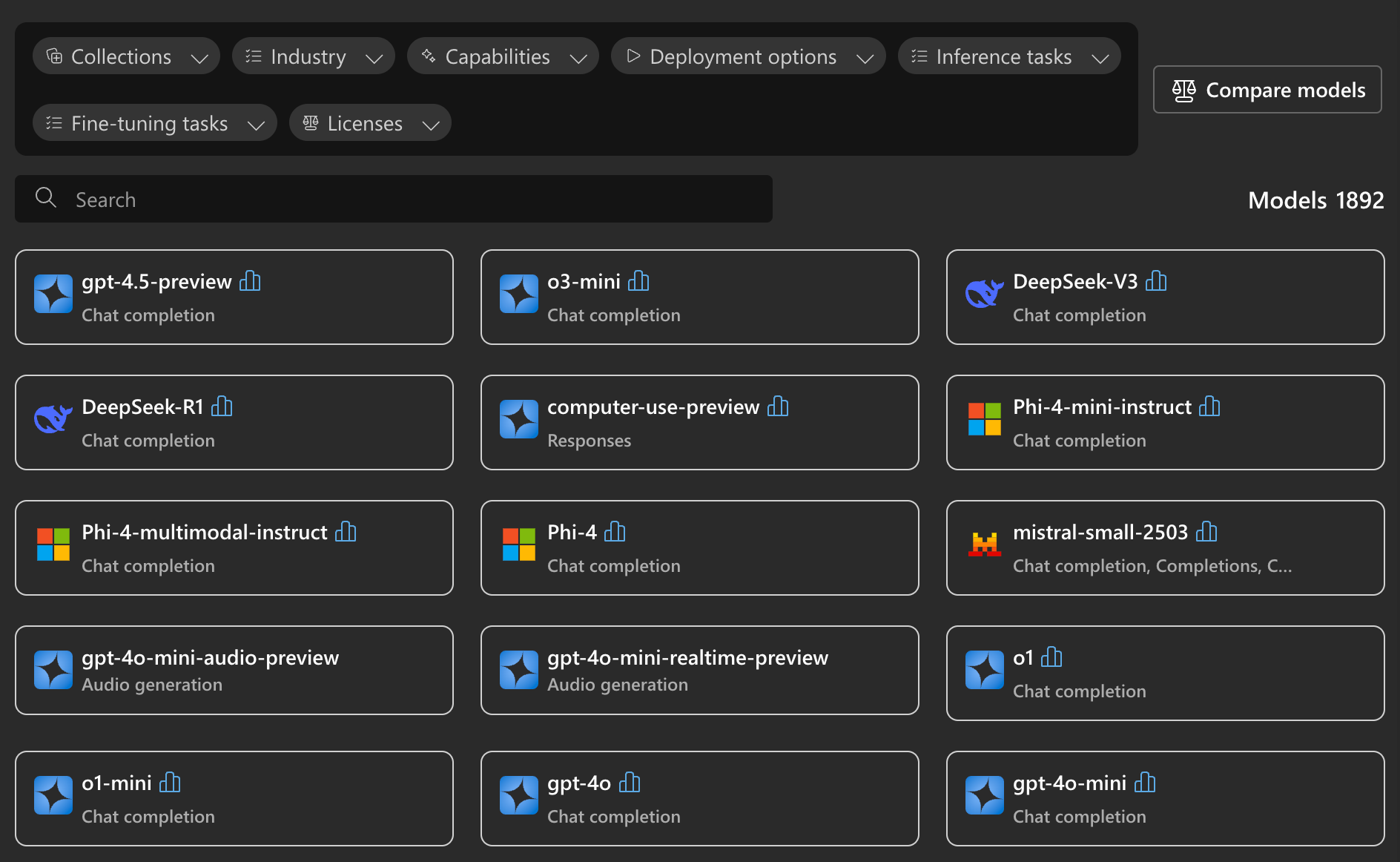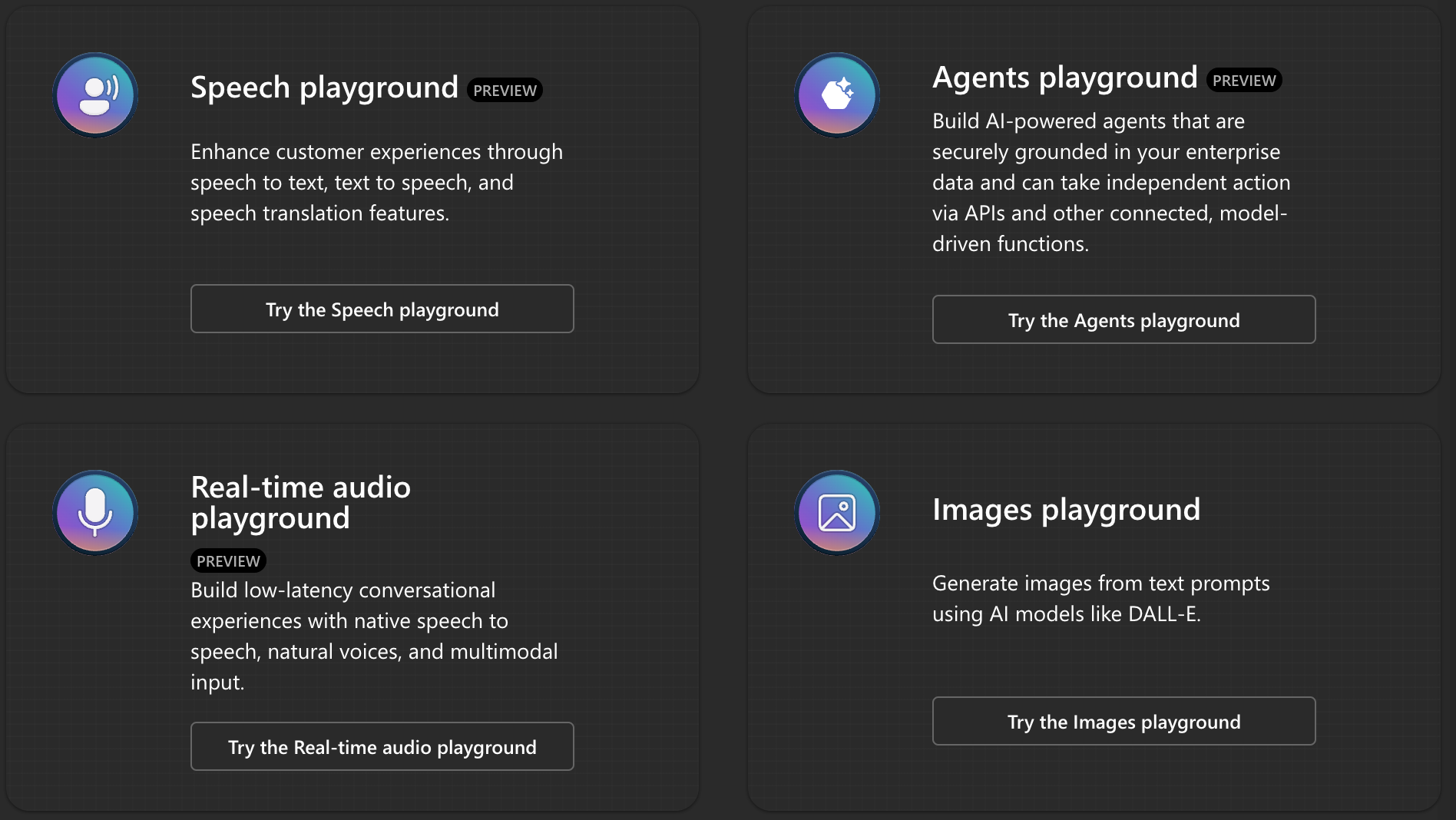Azure AI Foundry: What It Is & What It Isn't
 Daniel McLoughlin
Daniel McLoughlin
Introduction
The title of this post probably gives the game away, but why write it in the first place? Azure AI Foundry sounds impressive, but isn’t it just a rebrand of Azure AI Services? And wasn’t that just a rebrand of Azure Cognitive Services? Or maybe it’s all just a frontend for some advanced OpenAI stuff? Or is it the umbrella for everything AI-related in Azure now? Where does Copilot fit into all of this?!
See my point.
The name is great, but the purpose isn’t immediately obvious - and when something isn’t immediately clear, I find it helpful to break it down. So, in this post, I’ll do my best to unpick what Azure AI Foundry is, what it is not, and how it fits into the wider Azure AI story.
A Brief History
When I think of Azure AI, the first thing that comes to mind is Azure Cognitive Services. From what I remember, that was essentially a wrapper - a way to bundle up existing services like Document Intelligence, Speech Services, and others under a single label.
Then came Azure AI Services, which, at a glance, looked like another round of consolidation and rebranding.
Things started to shift with the introduction of Azure OpenAI, and more recently Azure AI Studio, which introduced a more unified space to interact with multiple services in one place.
Now we have Azure AI Foundry, which looks like the next iteration of that effort - but with a clearer focus on generative AI but also orchestration.
Quick timeline to give this some context:
2015 (Apr): Project Oxford launched (origin of Microsoft Cognitive Services).
2016 (Mar): Rebranded as Microsoft Cognitive Services.
2017 (Apr): Cognitive Services reached general availability.
2017: Azure Machine Learning launched for model training and deployment.
2019–2020: Expanded enterprise AI with MLOps and responsible AI tools.
2023 (Jan): Microsoft expanded its OpenAI partnership with a major investment.
2023: Azure OpenAI Service launched (GPT, DALL·E, Codex via API).
2023 (Nov): Azure AI Studio launched at Ignite as a unified GenAI platform.
2024 (Mar): Azure AI Foundry announced for building and scaling GenAI solutions.
2024 (Nov): Azure AI Foundry launched, unifying Microsoft’s enterprise GenAI stack.
I used ChatGPT for this, so please forgive any inaccuracies.
Azure AI Foundry - What Is It?
In a nutshell, Azure AI Foundry is more than just a wrapper containing lots of related services - it’s a platform.
Under a unified interface, Azure AI Foundry:
Brings together what used to be known as Cognitive Services (Document Intelligence, Vision, Language, Translator, Speech), Azure OpenAI, Azure AI Search, and more.
Gives access to a huge model catalogue, far beyond just Azure OpenAI models. You can compare models based on features and capabilities.

Lets you deploy models directly from the catalogue (subject to availability), generating API endpoints along with sample code to get started.
Includes tools for model evaluation, helping you measure and compare model performance. (Model training also appears to be supported - I'll dig into the why and how in a future post.)
Provides a hands-on "playground" environment for experimentation, covering things like image generation and real-time audio. You can link your playground work to models from the catalogue.

Supports custom data connections for building more tailored applications.
Enables additional capabilities like building Agents, using Templates, fine-tuning models, and creating prompt-flows. (I’ll explore these more in future posts as I learn.)
Includes a dedicated set of features for safety and security - this is a big focus within Foundry and deserves its own section, which I plan to explore in more detail as I get hands-on.
When evaluating new products and services like this, I try to take a holistic view - looking beyond just the features and capabilities. Azure AI Foundry isn’t a resource in the traditional sense. It’s not like a virtual machine or web app that you simply deploy and start using. Instead, it’s a platform within a platform, with its own self-contained ecosystem. It brings together a wide range of powerful tools and capabilities, which are impressive on their own—but the real value emerges when you start stitching them together and integrating them with the wider Azure and Microsoft ecosystem.
For example, you might use Azure AI Foundry to prototype, validate, and test your AI workflows, incorporating Responsible AI checks along the way. Then, as you transition from prototype to production, you’d connect your work to other Azure services such as Entra ID, Azure Monitor, AKS, API Management, and more—unlocking end-to-end scalability, governance, and operational readiness.
This diagram illustrates the GenAIOps lifecycle that underpins the journey I’ve just tried to describe - showing how Azure AI Foundry supports the transition from experimentation to production.
In short: it’s actually really hard to describe! There’s a lot to it, and in all honestly, I’m finding the portal UI a bit overwhelming. I’ll break that down into manageable chunks as this series progresses.
Azure AI Foundry - What It Isn’t!
First off, at the time of writing at least, Azure AI Foundry is not something you have to use in order to consume Azure AI services. You can still deploy many of these services independently—for example, setting up Document Intelligence or Azure OpenAI as standalone resources.
Why might you want to do that? Well, deploying services independently may give you more flexibility, especially if you're only using a specific capability and don’t need the full orchestration layer that Foundry provides. It might also be preferable for production environments where you already have infrastructure and pipelines set up, or where resource-level access and governance are tightly controlled.
Second, Azure AI Foundry is not everything AI-related in Azure. Services like:
Azure Machine Learning (for model training and ML workflows)
Azure Databricks (for collaborative data science and big data analytics)
Azure Synapse Analytics and Microsoft Fabric (for end-to-end analytics solutions)
...are not natively part of Foundry.
That said, they can be integrated where needed. Foundry plays nicely with the rest of the Azure ecosystem, so you can still connect to data, embed workflows, or trigger interactions across services like Fabric or Logic Apps.
GitHub Marketplace
As with most things in IT, there’s more than one way to do things!
GitHub also offers a model catalogue and playground through the GitHub Marketplace.

Unlike Foundry, where you have to deploy a model to use it, the GitHub Marketplace allows you to use hosted models directly without any setup. You can even compare models side-by-side, much like you can in Foundry. So what’s the catch? GitHub is free to use, but comes with rate limits, making it better suited for experimentation and quick testing than anything more meaningful.
Azure AI Foundry vs Microsoft Copilot
Calm down! Calm down! I’m not going to get into the whole “Pro-code vs Low-code” debate here. Not in this blog post, anyway!
I feel the need to call this out as “Microsoft AI” isn’t just one thing, or even one suite of things. There are different tools for different jobs.
Azure AI Foundry is built for developers and technical teams who want to create tailored AI experiences. It’s highly configurable, gives access to a broad set of models, and is designed for integration with other Azure services.
Copilot, on the other hand, is a ready-made tool aimed at end-users. It’s built into Microsoft 365 apps like Word, Excel, and Dynamics, and is meant to enhance productivity out of the box. It’s low-code (or no-code), and while it can be extended and customised to some extent, it doesn’t offer the same depth or flexibility as Foundry.
I’ll be digging deeper into this comparison in a dedicated blog post, where I’ll explore use cases, integration approaches, and how to decide which makes sense for your project.
Conclusion
Azure AI Foundry isn’t a replacement for everything else in Azure’s AI and data stack - and it doesn’t try to be. Instead, it offers a structured, developer-friendly way to experiment with and build generative AI solutions using Microsoft’s growing set of pre-trained services.
As someone learning this in real time, I’m using this series to make sense of the evolving landscape. If you’re on a similar path, hopefully this helps clarify where Azure AI Foundry fits in - and where it doesn’t.
Disclaimer: The views expressed in this blog are my own and do not necessarily reflect those of my employer or Microsoft. AI tools were used to assist with structure, spelling, and grammar — not for content authoring or ideas.
Subscribe to my newsletter
Read articles from Daniel McLoughlin directly inside your inbox. Subscribe to the newsletter, and don't miss out.
Written by

Daniel McLoughlin
Daniel McLoughlin
As a Technology Strategist, I help organisations bring clarity to complexity - connecting technology, business strategy and practical delivery. I currently work for Version 1, where I advise on how emerging technologies can be applied to create real business value - enabling organisations to adapt, innovate and scale with confidence. My background allows me to navigate both the strategic 'what' and 'why', while drawing on years of technical experience to understand enough of the 'how' to ensure strategies are grounded, practical and sustainable. In a rapidly evolving technology landscape, I focus on solving ambiguity - helping organisations make sense of emerging trends, partner ecosystems and shifting capabilities, while identifying opportunities that align with long-term business objectives. My approach is to bridge the gap between vision and execution, providing clear thinking in the midst of change and complexity.
